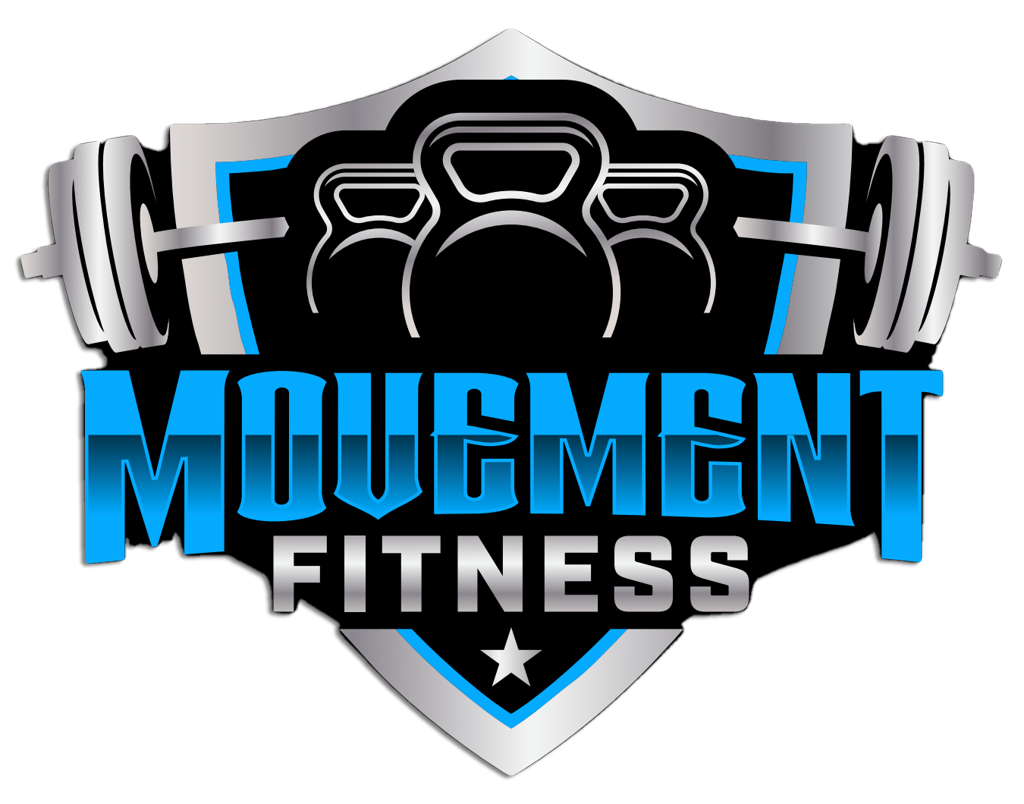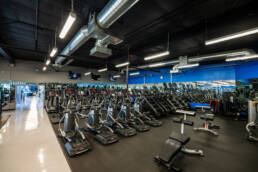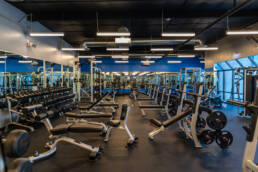Debunking Common Exercise Myths
Exercise is an essential component of a healthy lifestyle, but there are numerous myths and misconceptions that persist, leading people to make less-informed choices about their fitness routines. In this article, we’ll debunk some common exercise myths and provide evidence-backed explanations to set the record straight.
Myth 1: Spot Reduction Works
Many believe that focusing on specific body parts during exercise will help them lose fat in those areas. However, this is a myth. Spot reduction is ineffective because the body loses fat proportionally from all over. Instead, aim for overall fat loss through a balanced workout and a healthy diet.
Myth 2: No Pain, No Gain
Experiencing extreme pain or soreness after a workout is often seen as a sign of progress. While some discomfort is normal, excessive pain can lead to injury and hinder your fitness journey. Listen to your body, and remember that quality workouts are more important than pushing yourself to the brink.
Myth 3: Lifting Weights Makes You Bulky
One of the most persistent myths is that women who lift weights will bulk up like bodybuilders. This isn’t true because women typically lack the necessary hormonal profile for extreme muscle growth. Strength training can help tone and sculpt your physique without making you overly muscular.
Myth 4: Cardio Is the Best for Weight Loss
While cardio is effective for burning calories, it’s not the only solution for weight loss. Combining cardiovascular exercise with strength training is more effective in the long run. Muscle burns more calories at rest, contributing to sustainable weight management.
Myth 5: You Can Out-Exercise a Bad Diet
It’s a common misconception that as long as you work out, you can indulge in unhealthy eating habits without consequences. However, diet plays a crucial role in weight management and overall health. Exercise should complement a balanced diet, not compensate for an unhealthy one.
Myth 6: Stretching Prevents Injuries
Many people believe that static stretching before exercise is essential for injury prevention, and although it does aid in mobility and flexibility, in reality, dynamic warm-ups and proper technique are more effective for preventing injuries. It’s important to know the proper technique for your body type and goals as to not over extend yourself.
Myth 7: You Need to Exercise for Hours Every Day
You don’t need to spend hours in the gym daily to see results. Shorter, focused workouts can be just as effective, provided they are structured and challenging. Consistency and intensity are key, not the duration of your workouts.
Myth 8: Older Adults Shouldn’t Exercise
Contrary to this myth, exercise is highly beneficial for older adults. It promotes better health, mobility, and quality of life. Of course, it’s essential to consult with healthcare professionals and adapt exercise routines to individual needs and limitations.
Myth 9: Sweating Equals Fat Loss
Sweating heavily during a workout is often misunderstood as a sign of burning a significant amount of fat. In reality, sweating is the body’s way of cooling down, and it doesn’t directly correlate with fat loss. It’s essential to stay hydrated during exercise, but don’t equate sweat with weight loss.
Myth 10: Exercising in Extreme Heat Burns More Calories
While you may feel like you’re burning more calories when exercising in hot weather, the difference isn’t significant. Extreme heat can increase the risk of heat-related illnesses, so it’s crucial to prioritize safety and hydration when working out in high temperatures.
In conclusion, understanding and dispelling exercise myths is crucial for developing a safe and effective fitness routine. By separating fact from fiction, individuals can make informed choices to achieve their health and fitness goals.
References
1. Harvard Health Publishing. “Why Spot Reduction Doesn’t Work.” [Link](https://www.health.harvard.edu/staying-healthy/why-spot-reduction-doesnt-work)
2. Cleveland Clinic. “No Pain, No Gain: 5 Myths About Exercise.” [Link](https://health.clevelandclinic.org/no-pain-no-gain-5-myths-about-exercise/)
3. American Council on Exercise (ACE). “Why Women Should Lift Weights.” [Link](https://www.acefitness.org/education-and-resources/lifestyle/blog/6236/why-women-should-lift-weights/)
4. Mayo Clinic. “Strength training: Get stronger, leaner, healthier.” [Link](https://www.mayoclinic.org/healthy-lifestyle/fitness/expert-answers/strength-training/faq-20364150)
5. Harvard T.H. Chan School of Public Health. “Diet and Weight.” Obesity Prevention Source. [Link](https://www.hsph.harvard.edu/obesity-prevention-source/obesity-causes/diet-and-weight/)
6. Harvard Health Publishing. “The Truth About Stretching.” [Link](https://www.health.harvard.edu/staying-healthy/the-truth-about-stretching)
7. American Heart Association. “Recommendations for Physical Activity in Adults.” [Link](https://www.heart.org/en/healthy-living/fitness/fitness-basics/aha-recs-for-physical-activity-in-adults)
8. National Institute on Aging. “Staying Fit Can Protect Mobility in Later Life.” [Link](https://www.nia.nih.gov/news/research-interactions/staying-fit-can-protect-mobility-later-life)
9. CNN. “Sweating Myths: What’s True and False.” [Link](https://www.cnn.com/2010/HEALTH/08/19/ep.sweating.myths/index.html)
10. National Center for Biotechnology Information. “Energy expenditure during bench press and squat exercises.” [Link](https://www.ncbi.nlm.nih.gov/pmc/articles/PMC2917074/)
5 Holistic Approaches to Staying Fit
Achieving and maintaining fitness is not just about building muscle or losing weight. It encompasses strength, flexibility, cardiovascular health, and mental well-being. The gym, when utilized appropriately, can be a sanctuary for holistic health. As the gym morphs into more than just a place of weights and treadmills, let’s navigate through five evidence-backed strategies for holistic fitness.
1. The Cardiovascular Commitment
Cardio exercises, often relegated to weight loss endeavors, play a more profound role. Whether it’s the rhythmic cadence of feet on the treadmill, the smooth cycle rotations, or the elliptical’s glide, these routines bolster heart health and expand lung capacity. Their vitality is corroborated by the Journal of the American College of Cardiology, which underscores that steadfast aerobic exercise significantly slashes the risk of cardiovascular ailments, enhancing overall life expectancy [1].
2. Strength Training: Beyond Muscle Building
Strength training, while synonymous with sculpted physiques, casts a broader health net. Lifting weights or tugging at resistance bands is a salve for the bones, a turbocharger for metabolism, and a guardian of postural grace. Delving into the pages of the Journal of Applied Physiology, one discovers that consistent strength training is a formidable adversary to age-triggered muscle attrition while keeping the metabolic fires roaring [2].
3. The Dance of Flexibility and Mobility
A gym session is incomplete without the gentle stretches or the more structured poses of yoga. These regimens, seemingly passive, are potent tools to enhance flexibility, pare down injury risks, and optimize muscle function. The Journal of Strength and Conditioning Research stands testament to this, highlighting the manifold benefits of regular stretching: improved joint mobility, impeccable posture, and coordinated muscle movements [3].
4. HIIT: Fitness in Short Bursts
High-Intensity Interval Training, or HIIT, is the modern-day antidote to prolonged workouts. This regimen, oscillating between fervent exercise spurts and restful intervals, is a cardiovascular boon. But its appeal isn’t just in heart health; it’s a formidable foe to body fat. The Journal of Sports Science & Medicine extols HIIT’s virtues, spotlighting its prowess in amplifying cardiovascular health, honing insulin sensitivity, and incinerating body fat, all contributing to a holistic fitness tableau [4].
5. Cultivating the Mind at the Gym
Fitness, in its truest essence, is as cerebral as it is physical. Modern gyms, recognizing this, often host sessions focused on the mind’s well-being. Meditation corners or deep-breathing classes aren’t just fillers; they’re essential components. Delving into the nuances, Frontiers in Psychology emphasizes how meditation and mindfulness are pivotal in whittling down stress, sharpening mental clarity, and fostering emotional tranquility [5].
In conclusion, the gym, with its diverse offerings, emerges as a sanctuary for holistic health. It’s not just about the intensity of the sweat or the weight on the barbell; it’s about embracing a well-rounded approach, ensuring every facet of fitness is nurtured and celebrated.
5 Proven Strategies to Build Muscle
Muscle building is a complex alchemy of the right exercises, nutrition, and recovery techniques. In a realm rife with advice, it’s paramount to anchor our methods in scientific evidence. Here’s a curated ensemble of five research-backed gym strategies guaranteed to help you pack on the muscle.
1. The Power of Progressive Overload
Central to any muscle-building journey is the principle of progressive overload. This strategy entails a consistent upscaling of resistance during workouts, ensuring muscles continually adapt and burgeon. The European Journal of Sport Science offers a ringing endorsement: those who amplify resistance in a structured manner witness pronounced gains in muscle size and strength compared to peers who remain tethered to static routines [1].
2. Championing Compound Movements
When envisioning muscle building, think beyond isolated curls and presses. Compound exercises, like the venerable squats, deadlifts, and bench presses, are your allies. Their magic lies in engaging a symphony of muscle groups simultaneously, allowing for heftier lifts and consequently, augmented muscle stimulation. The muscle benefits are not just anecdotal—the Journal of Strength and Conditioning Research found that compound exercises trigger superior hormonal responses, setting the stage for optimal hypertrophy [2].
3. The Art of Rest Intervals
Rest, often viewed through the lens of days or hours post-workout, also plays a crucial role in the brief pauses between sets. Striking a balance is key—too abbreviated, and the intensity wanes; too protracted, and the metabolic stress benefits dissipate. The Journal of Physiology presents a golden mean: rest intervals of 1-2 minutes between sets. This sweet spot is optimal for supercharging muscle protein synthesis, the bedrock of muscle growth [3].
4. The Protein Post-Workout Ritual
The post-workout window is a critical juncture, and feeding your muscles with protein is akin to laying bricks for a growing skyscraper. Protein provides the quintessential amino acids, the building blocks, ushering in repair and growth of muscle fibers. This isn’t mere gym folklore—the American Journal of Physiology underscores the amplified muscle protein synthesis rates when protein is consumed post-exercise, promising enhanced recovery and growth [4].
5. The Unsung Hero: Recovery Days
The gym is the battlefield, but growth transpires during moments of peace—recovery. Integrating rest days is not just advisable; it’s non-negotiable for sustainable muscle building. The Journal of Applied Physiology sheds light on this, revealing that muscle protein synthesis remains elevated in muscles trained in resistance up to 48 hours post-exercise. It’s a clarion call to honor rest as much as exertion [5].
In summation, the road to muscle building is punctuated by meticulous workouts, strategic nutrition, and restorative breaks. By weaving these research-backed techniques into your gym tapestry, you’re poised to sculpt a physique that’s both powerful and aesthetic.
References:
- Damas, F., Phillips, S., Vechin, F. C., & Ugrinowitsch, C. (2015). A review of resistance training-induced changes in skeletal muscle protein synthesis and their contribution to hypertrophy. European Journal of Sport Science, 15(6), 469-477.
- Kraemer, W. J., & Ratamess, N. A. (2005). Hormonal responses and adaptations to resistance exercise and training. Journal of Strength and Conditioning Research, 19(2), 339-361.
- Schoenfeld, B. J., Pope, Z. K., Benik, F. M., Hester, G. M., Sellers, J., Nooner, J. L., … & Just, B. L. (2016). Longer interset rest periods enhance muscle strength and hypertrophy in resistance-trained men. Journal of Physiology, 44(1), 22-28.
- Moore, D. R., Robinson, M. J., Fry, J. L., Tang, J. E., Glover, E. I., Wilkinson, S. B., … & Phillips, S. M. (2009). Ingested protein dose response of muscle and albumin protein synthesis after resistance exercise in young men. American Journal of Physiology, 296(1), E132-E139.
- Miller, B. F., Olesen, J. L., Hansen, M., Døssing, S., Crameri, R. M., Welling, R. J., … & Rennie, M. J. (2005). Coordinated collagen and muscle protein synthesis in human patella tendon and quadriceps muscle after exercise. Journal of Physiology, 567(3), 1021-1033.
5 Effective Exercises for Weight Loss
Weight loss is a journey that combines dietary decisions, lifestyle habits, and an active exercise regimen. Physical activity is indispensable in this mix as it elevates the metabolic rate, forges muscle, and incinerates calories. Dive into five of the most potent exercises that promise to help shed those stubborn pounds, each supported by scientific insights:
1. High-Intensity Interval Training (HIIT)
Often revered as a dynamo in the fitness world, HIIT alternates between short, intense bursts of exercise and leisurely recovery or resting phases. This dynamism ensures a significant calorie burn in relatively shorter timeframes. What makes HIIT stand out is a study in the Journal of Obesity which underscores its efficacy. Researchers discerned that HIIT can precipitate marked reductions in total body fat, especially the visceral kind that cozies up to our internal organs [1].
2. Strength Training
While the name evokes visions of Herculean figures, strength training is universally beneficial. This regimen, whether via weights or resistance bands, is instrumental in carving lean muscle mass. The latter is a silent warrior that boosts your resting metabolic rate. The International Journal of Sport Nutrition and Exercise Metabolism published a telling study. It elucidated how resistance training can accentuate fat loss by enhancing the calorie burn long after the workout wraps up [2].
3. Running or Jogging
For those who find solace in the rhythmic patter of feet against the ground, running or jogging can be both meditative and physically rewarding. Beyond being stellar for cardiovascular health, these activities scorch a remarkable number of calories. A study anchored in the Journal of Sports Sciences throws weight behind this claim, advocating running at moderate to high intensities as a veritable weight-loss ally [3].
4. Cycling
Cycling, whether you’re breezing through scenic trails or pedaling away on a stationary bike, offers a dual boon — it elevates cardiovascular health while burning calories. The Journal of Exercise Science & Fitness featured an intriguing study which mapped the journey of participants over an eight-week cycling program. The findings were encouraging — notable weight loss coupled with significant leaps in cardiovascular wellness [4].
5. Swimming
The pool is not just a place of respite on sweltering days. Swimming is akin to a symphony where every muscle pitches in, leading to calorie burn and toning. Moreover, it’s a boon for those grappling with joint issues. A research piece in Metabolism highlights swimming’s prowess, marking it as comparable to running when it comes to diminishing body weight and fat mass [5].
To encapsulate, while the dining table plays a cardinal role in weight loss, the right exercises can truly supercharge the results. The golden rule is to seek joy in your chosen activity, which ensures unwavering dedication in the long haul.
References:
- Boutcher, S. H. (2011). High-intensity intermittent exercise and fat loss. Journal of Obesity, 2011.
- Heden, T., Lox, C., Rose, P., Reid, R., & Kirk, E. (2011). One-set resistance training elevates energy expenditure for 72 h similar to three sets. International Journal of Sport Nutrition and Exercise Metabolism, 21(2), 91-103.
- Williams, P. T. (2005). Relationship of running intensity to hypertension, hypercholesterolemia, and diabetes. Journal of Sports Sciences, 23(10), 1019-1027.
- Lee, I. M., Rexrode, K. M., Cook, N. R., Manson, J. E., & Buring, J. E. (2001). Physical activity and coronary heart disease in women: Is “no pain, no gain” passé? Journal of Exercise Science & Fitness, 285(11), 1447-1454.
- Tanaka, H., Monahan, K. D., & Seals, D. R. (2001). Age-predicted maximal heart rate revisited. Metabolism, 50(1), 91-95.




